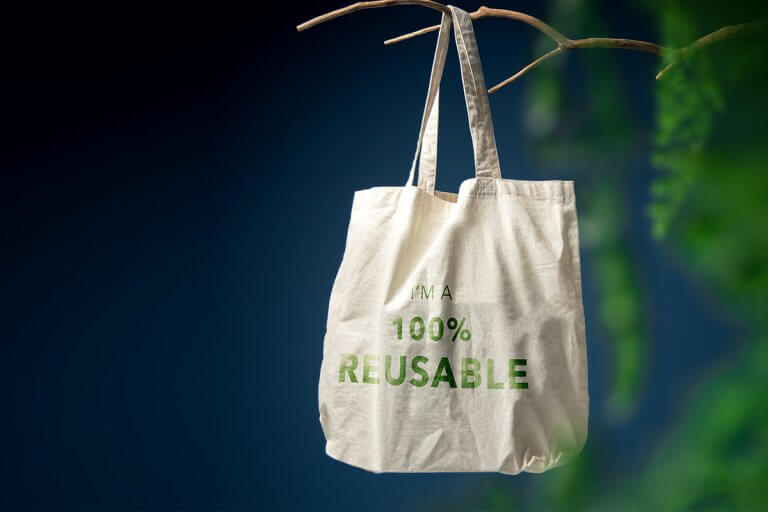

Menu
Paper and Plastic and Cotton – Oh My!
Plastic bags have been a hot-button environmental topic for a while now, even more so considering recent headlines about how much plastic we may be ingesting in our everyday lives. Some studies have even shown that microplastics can be found both in placentas and breastmilk, raising further concerns about the effects of human exposure, the extent of which are not yet known.
With that in mind, many jurisdictions have enacted single-use plastic bag bans and/or taxes, with mixed results. In 2019, the city of Philadelphia followed suit with a plastic bag ban of its own, though enforcement was delayed until 2021 by the Covid-19 shutdowns. Luckily for us, an efficacy study was mandated by the ordinance, so we are able to examine the effects of the ban in more detail.
Based on the observation data collected by the authors of the study, the decrease in plastic bag usage during the ordinance’s 3-month grace period was accompanied by a significant increase in the use of paper and reusable bags (including the reuse of plastic bags from other stores). This change was sustained over the remaining observation period, indicating that the ban has been quite effective in changing consumer behavior.
Now, this is all well and good, but what if your city or town doesn’t have a plastic bag ban? What difference can you make at an individual level? You can show local stores how you feel by using alternative bags, but which one is best? In researching this topic, I read several published articles, but National Geographic’s “Sustainable Shopping-Which Bag Is Best” made many excellent points. So, let’s look at the options one by one, along with some of the insights offered in the National Geographic article:
With that in mind, many jurisdictions have enacted single-use plastic bag bans and/or taxes, with mixed results. In 2019, the city of Philadelphia followed suit with a plastic bag ban of its own, though enforcement was delayed until 2021 by the Covid-19 shutdowns. Luckily for us, an efficacy study was mandated by the ordinance, so we are able to examine the effects of the ban in more detail.
Based on the observation data collected by the authors of the study, the decrease in plastic bag usage during the ordinance’s 3-month grace period was accompanied by a significant increase in the use of paper and reusable bags (including the reuse of plastic bags from other stores). This change was sustained over the remaining observation period, indicating that the ban has been quite effective in changing consumer behavior.
Now, this is all well and good, but what if your city or town doesn’t have a plastic bag ban? What difference can you make at an individual level? You can show local stores how you feel by using alternative bags, but which one is best? In researching this topic, I read several published articles, but National Geographic’s “Sustainable Shopping-Which Bag Is Best” made many excellent points. So, let’s look at the options one by one, along with some of the insights offered in the National Geographic article:
- Plastic bag production isn’t as resource intensive as paper or cotton, but they are difficult to recycle. Some stores offer these services since most curbside programs do not take them, but you must bring the bags back to the store to do so. Instead, most people use them as trash bags for small cans around the house, which is better than simply tossing them, but still leads to them ending up in a landfill and degrading into microplastics (e., the original problem).
- Paper bags are both biodegradable and recyclable, which sounds great, right? Unfortunately, paper bags require four times the amount of energy of plastics bags, not to mention that the chemicals used in the process are also damaging to the environment. Reusing paper bags would help make up for this, except that it takes between three and 43 uses to offset the damage, which is difficult to manage with a flimsy paper bag.
- Reusable bags can be great, but again, there are pros and cons. Cotton bags, for instance, require 131 uses to offset the climate impact of producing them, or thousands of times to offset their total environmental footprint. Heavier plastics such as nonwoven polypropylene only require 11 reuses to match standard plastic bags, but if you’ve ever used one, you know that bits of plastic still flake off due to wear and tear. Moreover, most of us forget to bring them to the store in the first place! However, reusable bags do have a positive impact in that they do limit the amount of plastic litter.

